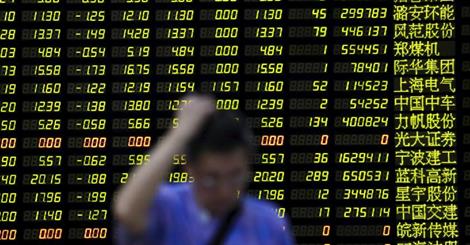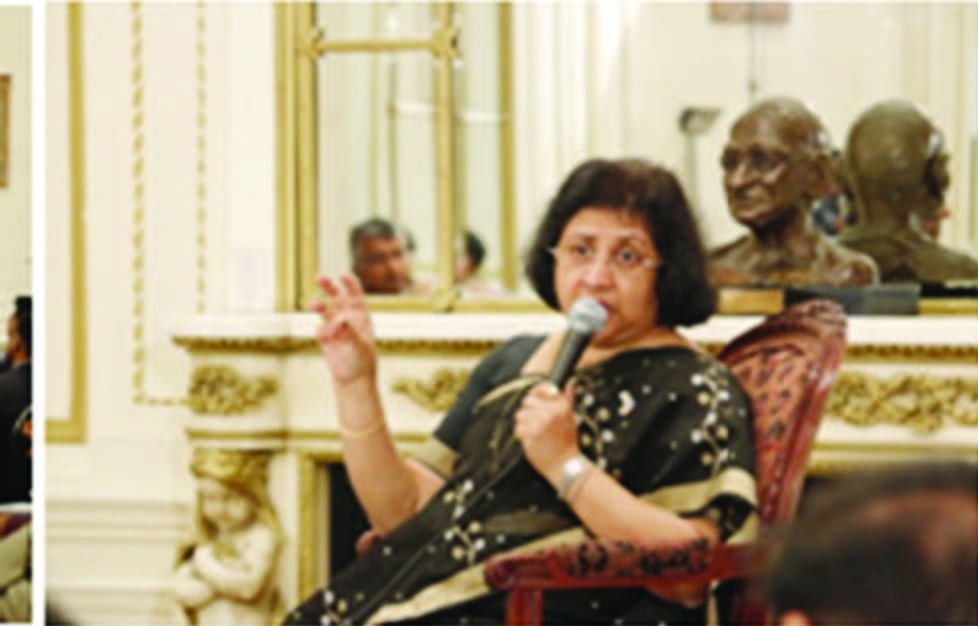
The global financial markets are in turmoil because of developments in China. The economic growth of China is slowing down since the last five years and is projected to grow at 6.3 per cent in 2016, from double-digit growth for nearly last three decades. The manufacturing sector in China is recording slower growth mainly due to a slowdown in exports because of a difficult global economy, mainly the US and Europe.
In addition, within China there are pressures to increase wages and improve working conditions in factories, which implies that the era of cheap exports could be coming to an end. There are still more problems in China like resistance to reforms in state-owned enterprises and the banking sector, and fight against corruption.
The economic difficulties and meltdown in China is not surprising to many policy analysts. As a matter of fact, for nearly a decade, China’s growth model was considered to be weak and susceptible to collapse. The savings rate of nearly 50 per cent and current account surplus of consistently more than 4 per cent, while touching a peak of 10 per cent in 2007, was not considered sustainable. The IMF, USA and other policy makers had been advising China to move to a more market-based financial system and monetary policy framework, reform the banking system specially shadow banking, moderate investment especially in residential real estate, liberalize interest rates, eliminate implicit guarantees, reform state-owned enterprises, adopt floating exchange rate and strengthen fiscal framework which includes finances of local bodies, social security system, and tax policy. Further, China had been advised consistently to increase consumption level within the economy, adjusting the exchange rate to appropriate levels and shifting its growth strategy from exclusive focus on exports. Some progress was made but much remained to be done in China.
In view of the global pressure, China, has been making some efforts, more recently though, to be more market-oriented and find a respectable place in the global economy, which would facilitate in making Renminbi an international currency. Thus, there is a conscious shift taking place in policy making in China. In addition, to enhance domestic consumption, focus is beginning to change from manufacturing to modernizing services, which accounted for nearly 48 per cent of GDP in 2014. Chinese, with rising income levels and 60 per cent of population living in urban areas, are increasingly demanding better services like communication, healthcare, and basic utilities.
Earlier, on August 11 and 12, Chinese authorities had made an exchange rate adjustment by mainly devaluing the currency which sent shivers across the financial markets of the world. And, still earlier, in July 2015, there was a correction in the Chinese stock market, and the authorities responded with a range of measures to stabilize the market. In the recent episode of August 24 and 25, Chinese authorities have responded by lowering the rate of interest and reserve ratios in an attempt to restore orderly conditions in the market. In fact, despite these corrective measures, Chinese markets are wobbly and that is creating tensions in the international arena.
The uncertainty caused by development in China has implications for India and rest of the world. The implications for India are immense, especially for its banking and export sectors, and the fiscal policy. First, the uncertainty brought in by China’s initial devaluation on two consecutive days, followed by a small appreciation on August 14 will add to the already increasing uncertainty of the timings of US Fed’s policy which has implications for capital flows in India. The commercial banks, which lend against exports, would now need to factor the uncertainty in the Chinese market, in addition to evaluating the clients and commodities. Second, the vulnerable sectors, where NPAs of banking sector are high in India, include steel and textiles. The price of Chinese steel will decline further because of devaluation and the Indian authorities may have to dynamically adjust the import barrier upwards, or provide subsidy to domestic manufacturers, while stressing the fiscal deficit. On textiles, exporters from India would probably seek support to compete with products from China. Third, policy makers would have to be on high alert to next measures initiated by China to match the steps if India nurses the dream to internationalize its own currency and expand its presence in international markets. Finally, in any case, this is a golden opportunity for India to expand its exports markets and consolidate its position as a stable and responsible economy in a galaxy of nations.
For international markets, developments in China’s stock market would only enhance the level of uncertainty but cannot make any significant impact, given its localized stock market. Therefore, global markets, including India, staged a recovery within two days of the problems emerging in China’s market. However, pertinent question for global analysts is whether in these difficult times, would the Fed Reserve of the US be able to raise interest rates, as was anticipated earlier, from September 2015? This question would the most important issue to churn for the global markets now.
To conclude, the Chinese economy needed to be market-oriented and seems to be on the way for market determination of interest rates and exchange rates. Theoretically speaking, these are measures in the right direction for the market orientation of the economy. The concern is whether the Chinese authorities have the capability to ensure a soft landing or would there be a noisy hard landing like Russia in the early 1990s.
While the Chinese have to accept the new philosophy and not intervene in the market as they did during the stock market crash in July 2015, the rest of the world and the global markets have also to factor the changing paradigm in China. After all, structural changes are never easy, be it an individual or a country and so would not be easy for China either.
(The author is RBI Chair, Professor in Economics, IIM Bangalore. He can be reached at charansingh@iimb.ernet.in)





Be the first to comment